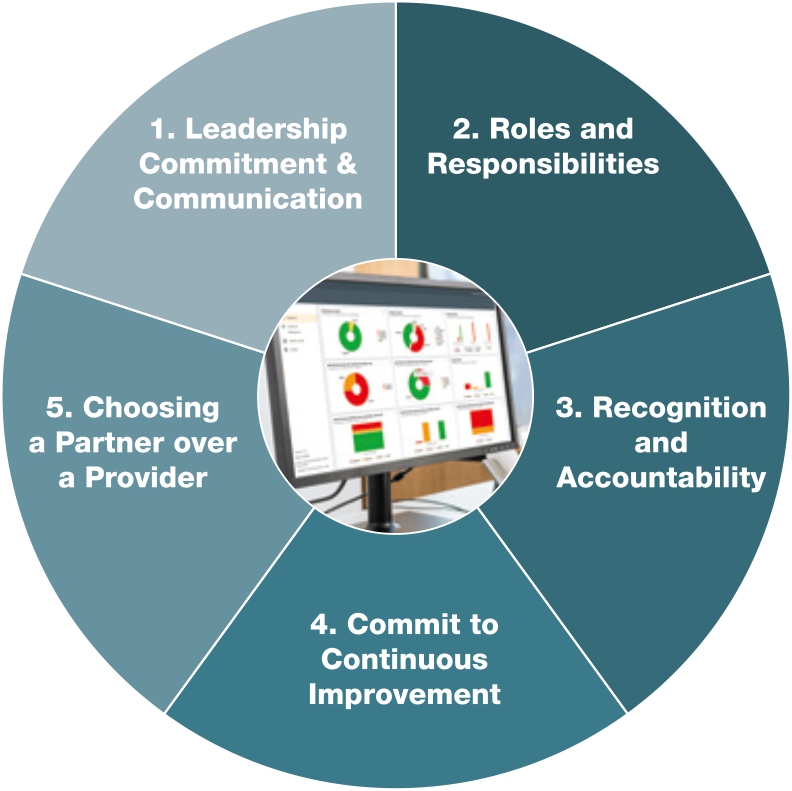Being successful in the foodservice industry has long been determined by how well you maintain your sales, labour, food cost, and customer satisfaction. The food industry values these success factors so much, it has looked to technology solutions to monitor and manage these metrics to make it easier to operate a business that keeps customers coming back. However, the foodservice industry has been slow to adopt technology solutions capable of providing food safety metrics. The time has come for this to change. Regulatory agencies have also benefitted from technological advancements that are providing better detection and investigative tools, which is evident in the ever-increasing number of product recalls and food-related illness outbreaks that get communicated via social media globally in the blink of an eye.
|
According to the Centers for Disease Control and Prevention (CDC) over 60% of foodborne disease outbreaks are linked to restaurant-style foodservice operations.1
|
 |
|
A recent study completed by Johns Hopkins University has determined that the cost of a single foodborne illness outbreak can range between $3,968 to $2.6 million depending on the type of organization and scope of the outbreak.2
|
Today, most restaurant and retail operations use paper-based quality management programs to capture critical food safety metrics. Many food safety professionals have devoted a significant amount of their time to developing checklists, protocols and reports on paper that are easy to use, very visual and informative. However, these types of programs provide limited visibility when used across multiple locations and can result in unreliable and incomplete information. They also provide little assurance that the proper corrective action processes are followed.
As consumer health and food safety continue to be at the forefront of concerns for foodservice providers, digital food safety management systems (DFSMS) that are customized to fit a business’s unique needs can help reduce corporate risk, lower site costs, and improve the customer experience with higher quality food. Such technologies will empower foodservice organizations to include food safety as a success indicator alongside the others as previously mentioned.
The technology available today can provide the necessary tools to be successful when it comes to digitally measuring and monitoring the execution of food safety in daily operations. Below are some key points to consider:
The 5 Key Elements of Measurable Food Safety

- Leadership Commitment & Communication: Understand that adopting a technology-based food safety management system is a significant undertaking that will not happen overnight and requires leadership commitment at every level of the organization. Clear, effective communication on the who, what, when and why should be planned for.
- Roles and Responsibilities: Implementing a DFSMS will result in changes to some roles and responsibilities. New positions and opportunities may develop throughout the process. Taking the time to understand how current employees really execute tasks will help in determining how the DFSMS will impact the various roles within your organization.
- Recognition and Accountability: DFSMS enable a level of operational visibility not achievable with traditional paper-based programs. Information once traditionally only available through on-site visits, 2nd and 3rd-party audits or regulatory inspections will be available in real-time. This provides a perfect opportunity to celebrate the high performers, take the guesswork out of employee training and implement progressive discipline opportunities.
- Commit to Continuous Improvement: As stated previously, a DFSMS will provide program manager(s) a level of insight and actionable information to make changes to the food safety program significantly faster. Changes can be made centrally, then distributed to the entire organization with just a few clicks.
- Choosing a Partner over a Provider: In contrast to a provider, a true partner is going to be committed to supporting you during the digitization process and will be critical to ensuring your success. The right partnership can also provide you the opportunity to work together on development opportunities.
 |
ABOUT THE AUTHOR
Eric Moore has been a proactive leader in improving food safety programs at multiple industry-leading food service and retail organizations over the last 20 years. Currently, Moore is the “Director of Food Safety and Industry Relations” at Testo North America. In the course of his career, Eric Moore has gained various industry certificates and memberships. He has been CP-FS certified since 2005, and since 2012 has been an active participant and committee member of the Conference for Food Protection (CFP). Eric Moore is a Food Safety Preventative Controls Alliance and HACCP qualified person who has been certified by the National Sanitation Foundation International (NSF).
|
|
As a member of numerous working groups in the Global Food Safety Initiative (GFSI), GS1, the American Frozen Food Institute (AFFI), the NSF International Joint Committee, the National Restaurant Association Educational Foundation, the National Environmental Health Association (NEHA) and Prometric, he has made his expertise available for the development of standards, guidelines, education and training curriculum and examination contents on the topic of food safety. Eric Moore is currently Vice Chairman of the Retail and Food Service Professional Development Group in the International Association of Food Protection (IAFP), Chairman of the CFP Sponsoring Committee and a member of the Association of Food and Drug Officials (AFDO) Industry Associate Committee.
At Testo North America, Eric Moore is responsible for the organizational management and consultation of all topics in the field of food safety, monitoring all aspects of compliance and regulations.
|
Sources:
1 “Highlights from the 2017 Surveillance Report.” Centers for Disease Control and Prevention (CDC). Surveillance for Foodborne Disease Outbreaks, United States, 2017, Annual Report. Atlanta, Georgia: U.S. Department of Health and Human Services, CDC, 2019. https://www.cdc.gov/fdoss/annual-reports/2017-reporthighlights.html.
2 Bartsch, Sarah M., et al. “Estimated Cost to a Restaurant of a Foodborne Illness Outbreak.” Public Health Reports, vol. 133, no. 3, May 2018, pp. 274–286, doi: 10.1177/0033354917751129






